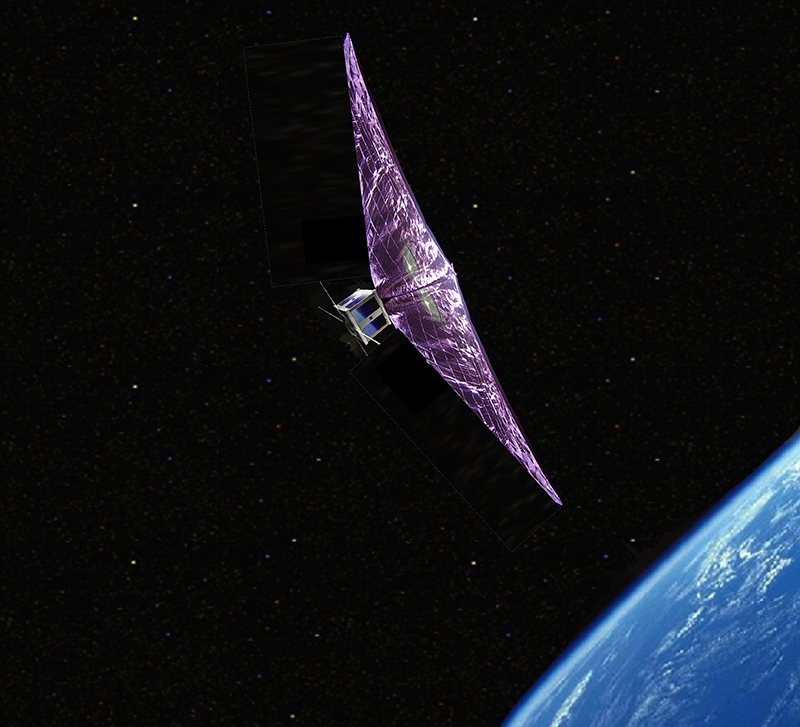October 24, 2016
AAE CubeSat flight experiment picked for launch on ULA rocket
 Aerodynamic Deorbit Experiment
Download image
Aerodynamic Deorbit Experiment
Download image
WEST LAFAYETTE, Ind. — A Purdue University experiment has been picked to go into orbit aboard a United Launch Alliance rocket.
David Spencer, associate professor of aeronautics and astronautics in the College of Engineering, was notified his project, Aerodynamic Deorbit Experiment, was selected for flight as a secondary payload on a future Atlas V launch. A launch date in 2018 has been targeted.
The experiment was one of four proposals selected through ULA's rideshare program, CubeCorp.
"I liked our chances," he said. "I thought we had a good concept, and now that we have a launch slot I'm looking forward to demonstrating our technology in the space environment."
Purdue's ADE CubeSat will be a small-scale prototype of a device that can be used to deorbit 150 kg-class satellites from orbit altitudes of up to 750 miles in less than 25 years.
"Private companies are actively pursuing the deployment of thousands of small satellites into this regime for global internet service," Spencer said. "A successful ADE mission will demonstrate the viability of the drag device, with commercial applications relevant to the deorbit of large constellations of satellites."
Without such a deorbit capability, the satellites can stay in orbit for more than 100 years beyond their use.
The ADE drag sail will be deployed from the CubeSat either autonomously based on a timer, or via a command sent from ground controllers. From the top of the CubeSat, four booms will extend from ADE with a thin, lightweight membrane stretched between them.
While flat drag sails have been tested before, Spencer said the four-sided pyramid geometry of his sail's design improves on the concept by allowing the sail to self-right its orientation in the upper atmosphere and, as a result, provide the maximum drag possible.
The booms, Spencer said, are comparable to a tape measure in terms of flexibility and will measure one-meter long. Three different materials still are being considered for the sail membrane, which will be about 5 micrometers thick.
The CubeSat is a 10-cm cube in its launch configuration. Once deployed, the experimental sail presents a drag area of about 0.7 square meters. In addition to the drag sail, the CubeSat will contain an inertial measurement unit, flight computer and telecommunications equipment.
Spencer said once the CubeSat is deployed from the Atlas V rocket, a one-week on-orbit checkout will verify all systems are functioning and allow initial determination of the ADE orbit. When the drag sail is deployed, ADE is expected to deorbit in about 11 days. Without a drag sail, the CubeSat would remain in orbit for up to seven years.
During atmosphere re-entry, the drag sail and CubeSat are expected to burn up at about 40 miles above the Earth's surface, ending the ADE mission.
Spencer said he intends bring undergraduate students in for design, integration and testing of the experiment by offering a course called Space Flight Project Implementation in the School of Aeronautics and Astronautics in the spring.
Alina Alexeenko, professor of aeronautics and astronautics at Purdue, is co-principal investigator on the project, with Purdue graduate student Brandon Smail assisting.
Writer: Brian L. Huchel, 765-494-2084, bhuchel@purdue.edu
Source: David Spencer, 765-494-8774, dspencer@purdue.edu

